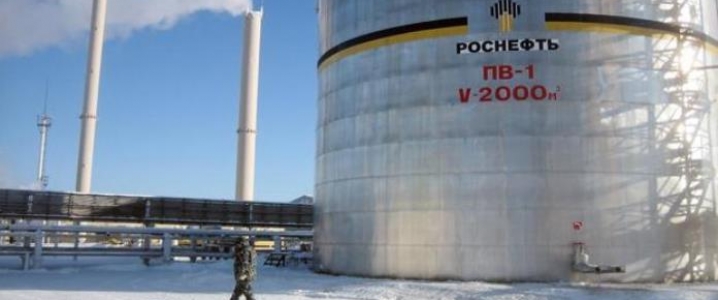Russia plans to propose to the OPEC/NOPEC allies next week that they reverse the group’s production to the October 2016 levels—the baseline for the cuts of most pact participants when they had pumped as much oil as they could to blunt the cuts’ impact later.
Moscow will propose that OPEC and its Russia-led non-OPEC partners in the deal increase their combined production by 1.8 million bpd, starting as early as in July, Bloomberg reports, citing a person familiar with the Russian thinking.
Yet, even with the 1.8 million-bpd production rollback, the total OPEC/non-OPEC level would still be around 1 million bpd below the October 2016 levels, because some producers, notably Saudi Arabia, have cut more than intended, while others, most notably Venezuela, have seen involuntary production declines and are unable to lift production, the person told Bloomberg.
Russia thinks that its proposed production level would result in stable oil prices during the peak summer demand season in the northern hemisphere. Moscow will also support extending the OPEC/non-OPEC alliance into next year—with or without new production levels, depending on the oil market conditions, according to Bloomberg’s source.
Russia, alongside Saudi Arabia, has the highest spare capacity to boost production. Moscow’s pledge in the deal is to shave off 300,000 bpd from the October 2016 level, which was the country’s highest monthly production in almost 30 years—11.247 million bpd.
Russia and Saudi Arabia, the leaders and largest producers of the non-OPEC and OPEC producers in the deal, have started to hint that they could reverse some of the cuts ‘to ease consumer and market anxiety’, and reports have it that the production boost could be as much as 1 million bpd. Related: The Permian Faces A Long Term Natural Gas Crisis
Most of the other OPEC nations are reportedly upset with Saudi Arabia for not consulting them prior to such comments and hints, and most of the OPEC members—excluding the Saudis and some of its Gulf allies (Kuwait, the UAE)—will not be able to lift production significantly in order to offset lower oil prices.
Russia’s proposal will be just one of many suggestions up for discussion at the meeting in Vienna next week, which is expected to be one of the most heated and contentious summits in recent years.
According to Citigroup, some increase of the pact’s oil production “looks inevitable”, because it is supported by the two biggest producers. The bank thinks that a production boost of around 500,000 bpd is the most likely outcome.
By Tsvetana Paraskova for Oilprice.com
More Top Reads From Oilprice.com:
- Venezuela Won’t Have Enough Oil To Export By 2019
- The Oil Giant That Saw Its Cash Reserves Plunge 90%
- OPEC’s Second Biggest Producer Faces Instability


















When Trump did away with the Iran deal, the question was, "How many bbl/day will come offline and starting when?" OilPrice reported then that the U.S. should not be affected, as most customers of Iranian oil are from Asia and Europe, and this wouldn't be an issue for them until much later this year.
But, then Saudi Arabia stepped up (after thanking Trump for his decision on behalf of the U.S. to exit the Iran deal). The Saudis are more than happy to fill the market share, but only if there is a supply issue. Mind you, prices for WTI were between $72 and $73/bbl at that time.
As Venezuela re-elected Maduro and more of their barrels of oil came offline, Russia said they would also step in to offset any supply disruptions and...BOOM! Prices of WTI fell from a high of $72.90 to last Wednesday (June 6th) of just over $64/bbl for the low.
On that very day, instead of going lower based on a strong U.S. dollar vs. a basket of other currencies, rising rig count data from weekly Baker Hughes reports, record U.S. production AND bearish news from the EIA report, oil instead went higher, and we've been in the $66s for a whole week "because of Venezuela". Prices were supported due to jawboning on behalf of Iraq, who is sticking to the production cuts and thereby not profiting from this market share war.
So, as of today, we still have a strong U.S. dollar and record U.S. production offsetting the bullish report from the EIA, and as of last Friday, rising rig count data...but this article confirms that Russia is fighting for market share.
The bottom line: Folks, don't listen to some French oil bull about $300 oil, and be sure not to be like the hedge fund managers who have already calculated their profits should oil go to $80 - $100 (what the Saudis jawboned for). Just realize that $72.90 was more than enough to get record production from the U.S. albeit shale, Permian, etc. and now Russia sees the U.S. soon to surpass their number 1 spot of oil production--thus taking market share--making the timing of this decision NO coincidence...now that both the Saudis and the Russians want to "cash in" this production cut deal will collapse from other members of OPEC by the year's end. Prices may not go that much lower (e.g., $60+/bbl) but they are not about to make new highs either--after all, everyone of those in the agreement increased their daily production to record highs until January 1st, 2017.